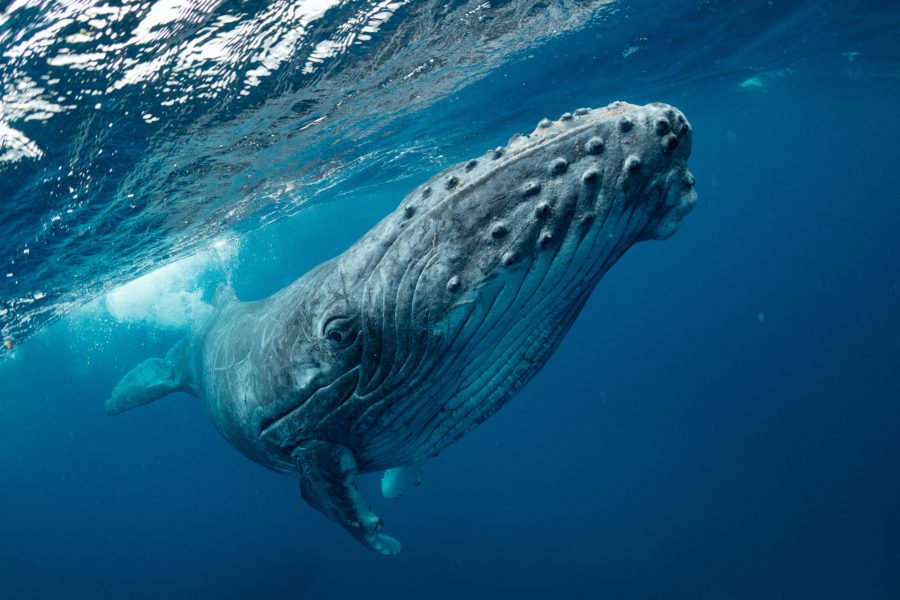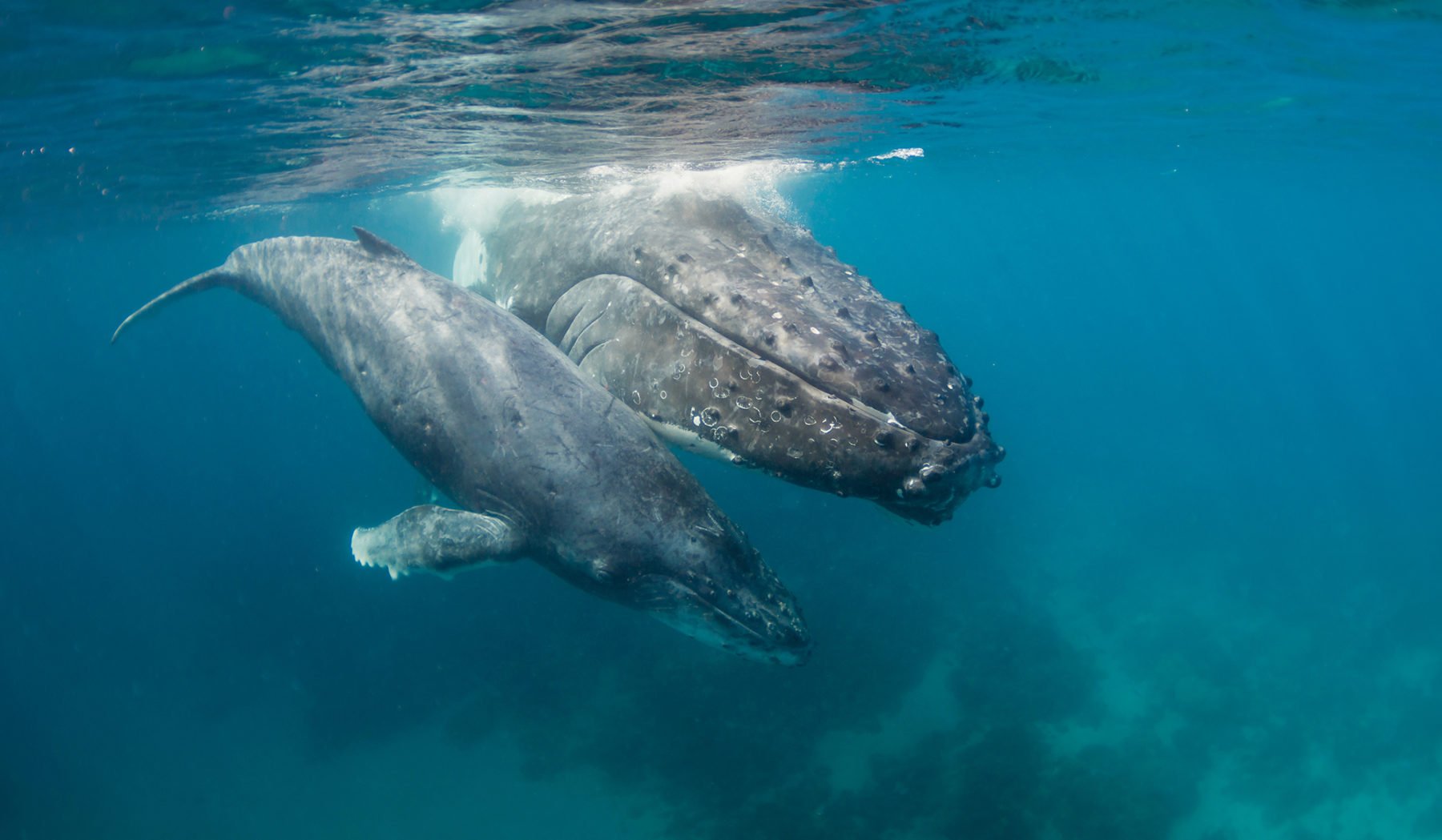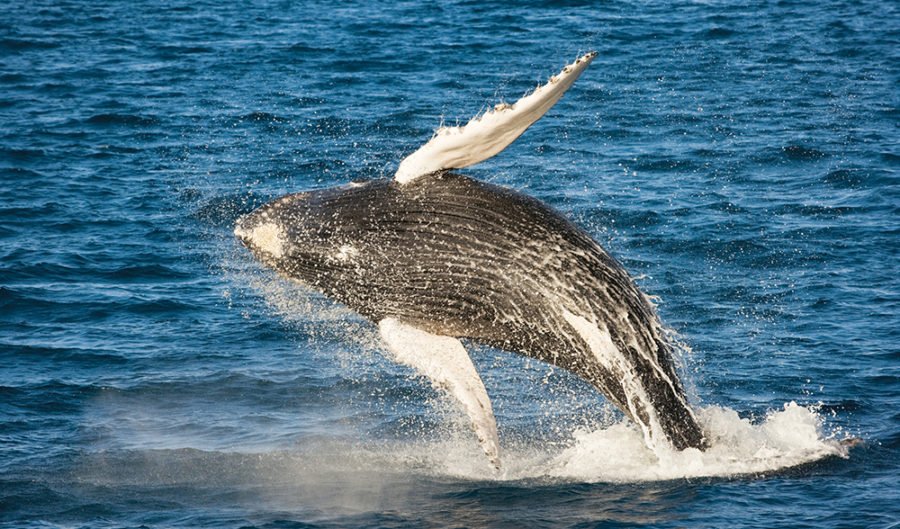Humpback whales: Five things you may not know

Humpback whale life is filled with cultural traditions around song, feeding and other behaviours that they learn from each other and pass down through the generations.
Here are five remarkable aspects of their lives:
1. Humpback whales may pass on feeding cultures like bubble net feeding
In 2020, in an Australian first, supergroups – a group of 20 or more humpback whales – were seen bubble net feeding in NSW and Tasmanian waters.
“Bubble net feeding is where humpback whales either individually or co-operatively blow bubbles from their nostrils around their prey,” explains Dr Vanessa Pirotta from the Marine Predator Research Group at Macquarie University. The spiralling bubble net packs the prey – krill or small fish – into tight balls. The humpbacks then spear upwards, breaking the water’s surface, their giant mouths agape to engulf prey.
Why did this behaviour appear in East Australian humpback whales last year? Bubble net feeding in supergroups has been seen in Alaska since the 1980s. We know bubble net feeding also happens in Antarctica. Vanessa says, “we don’t exactly know how the behaviour has arisen in the population”.
In her research paper, she says one possibility is that individuals in the East Australian Humpback population learned this behaviour from whales from another population.
2. Male humpback whales sing but exactly why remains a mystery
During the breeding season, the ocean is a symphony of male humpback whale songs. Guttural groans, rising whoops and strange noises like creaking doors travel through the deep blue waters.
Who is the singing for? “We still don’t actually have a grasp of that yet,” says Dr Jennifer Allen, a researcher at Griffith University who specialises in whale song. “Are they trying to impress the girls? Are they trying to intimidate the boys? Are they doing a bit of both?” she says.
Scientists do know each population has its own ‘dialect’; its own song. Jennifer says, “the song will change each year, but each male singer still learns the new song.”
3. There are periodic revolutions in humpback whale song
Songs change incrementally because males within the population tinker with the tune and add their own flair. However, every few years, there are song revolutions. This is when drastic changes in song ripple through humpback whale populations in a west to east direction across 6000km of ocean basin like a slowly moving tidal wave.
Why does this happen? One theory is males from one population may pick up the song from males in another population when they get within earshot of each other, perhaps during migration.
One potential place where this occurs is Raoul Island, a migratory stopover off the coast of New Zealand.
Scientists documented in a recent paper males from various populations present, singing different songs. One male, though, was singing a hybrid song. He was in the process of picking up the catchy new tune from whales he wouldn’t usually mingle with.
4. Humpback whale calves whisper to their mothers to avoid detection
Male humpback whales are the opera singers of the sea. You can hear their songs from several kilometres away. Mother-calf pairs, however, take a very different tact when it comes to vocalisations. Calves ‘whisper’ to their mothers in soft squeaks and grunts, which cannot be heard more than 100m away.
It is thought calves do this for two reasons. The first is to avoid detection by orcas who prey on young humpback whales.
The second is so that amorous adult male humpbacks don’t find and escort the mother and calf back to Antarctica, hoping to mate regularly with mum. It seems going undetected means a greater chance of survival and more nursing time for the calf. This gives the calf the best start to the first of its many annual migrations.

5. Humpback whales migrate the longest distance of any marine mammal
Humpback whales are the great wanderers of our oceans. They undertake arduous annual migrations, with some humpback whale populations travelling over 8000km on their trans-oceanic migration. In Australia, humpback whales migrate north up both the west and east coasts during winter. They head to tropical waters to mate and give birth.
Despite how iconic they are, there is still much to learn about humpbacks. We don’t know precisely where in the Great Barrier Reef they calve and mate. We don’t know how much the different populations of humpback whales interact with each other at their summer feeding grounds in Antarctica.
We don’t understand why song revolutions travel west to east across the South Pacific and not back the other way. Scientists are searching for answers to these questions. “By understanding their culture, we can better understand a lot of aspects of the species which can help us better protect them,” says Jennifer.


